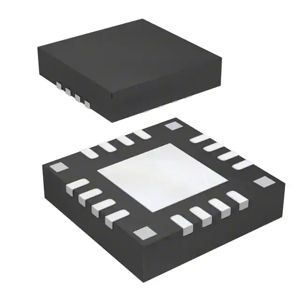
Motion Sensors - Accelerometers
Motion Sensors - Accelerometers: Precision in Motion Detection
Definition:
Motion Sensors - Accelerometers are specialized devices designed to measure acceleration forces, including static (gravity) and dynamic (movement or vibration) forces. These sensors are essential for detecting and analyzing motion in various applications, from consumer electronics to industrial systems. By converting mechanical motion into an electrical signal, accelerometers provide critical data for orientation, tilt, shock, and vibration detection.
Types of Motion Sensors - Accelerometers:
1. MEMS (Micro-Electro-Mechanical Systems) Accelerometers: Compact, low-power sensors widely used in smartphones, wearables, and IoT devices for motion tracking and gesture recognition.
2. Piezoelectric Accelerometers: Ideal for high-frequency vibration monitoring in industrial machinery, automotive testing, and aerospace applications.
3. Capacitive Accelerometers: Known for high accuracy and stability, commonly used in navigation systems, robotics, and medical devices.
4. Piezoresistive Accelerometers: Robust sensors capable of measuring high-impact forces, often applied in automotive crash testing and structural health monitoring.
Buying Recommendations:
When selecting an accelerometer, consider the following factors:
- Measurement Range: Choose a sensor that matches the expected acceleration levels (e.g., 2g for consumer devices vs. 500g for industrial impacts).
- Bandwidth: Ensure the sensor s frequency response aligns with your application (e.g., low-frequency for tilt sensing vs. high-frequency for vibration analysis).
- Output Type: Analog, digital (I2C/SPI), or wireless outputs should suit your system s integration requirements.
- Environmental Durability: For harsh environments, opt for models with robust enclosures and resistance to temperature, humidity, or shock.
Motion Sensors - Accelerometers are pivotal in enabling smart, responsive systems. Whether for innovation in consumer tech or precision in industrial automation, selecting the right accelerometer ensures optimal performance and reliability.
Filter and sort
Categories
ADIS16003CCCZ
ACCELEROMETER 1.7G SPI 12LGA
PSLX62000AESR2
XTRINSIC 2 AXIS ACCELEROMETER
MMA2631NKGCWR2
ACCELEROMETER 312G PCM 16QFN
7002 HT
PIEZOELECTRIC ACCELEROMETER/MINA
PXLS84433AESR2
2 AXIS HI/HI XZ
POLY-S167A-L915US
PREVENT MACHINE MALFUNCTIONING W
PXLS83722AESR2
2 AXIS MED/MED YZ
PXLS63433AESR2
PSI5 PROTOCOL 2 AXIS HIGH/HIGH
PXLS80433AESR2
2 AXIS HI/HI XZ
787A-M8-D2
ACCEL IEPE SENSOR
SCA2110-D04-1
ACCELEROMETER 2G SPI 12SMD
AIS25BATR
MEMS DIGITAL OUTPUT MOTION SENSO
MXD6240AU
SENSOR TIP OVER AUTONOMOS VIBR
787A-M8-IS
ACCEL IEPE SENSOR
POLY-S165A-L915US
SECURE PERIMETERS AND MONITOR AN
FXLS60433AESR2
XTRINSIC 2 AXIS HIGH/HIGH XZ ACC
HV200
ACCEL IEPE SENSOR 100MV/G 5%
PXLS80422AESR2
2 AXIS MED/MED XZ
PXLS70533AESR2
2 AXIS HIGH/HIGH YZ ACCELEROMETE
MMA5248LCWR2
PSI5 ACCELEROMETER QFN 16


